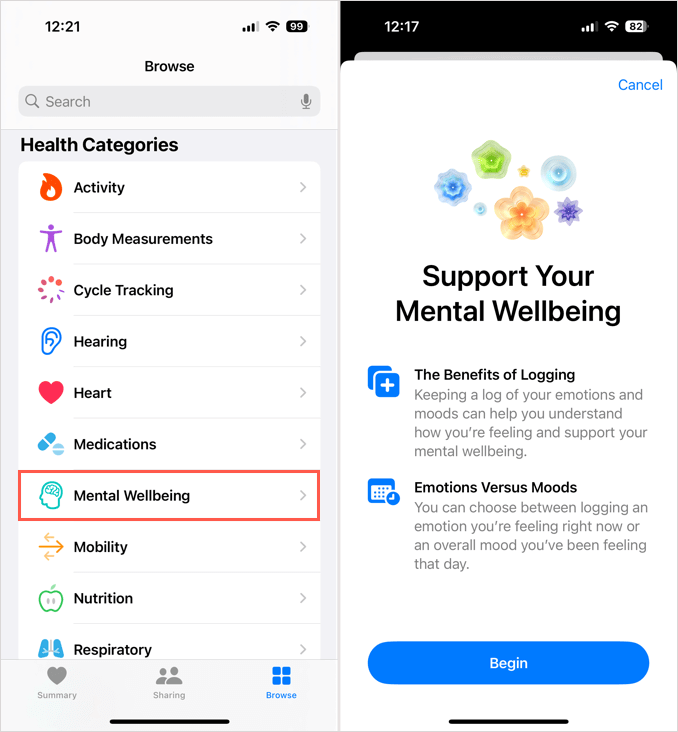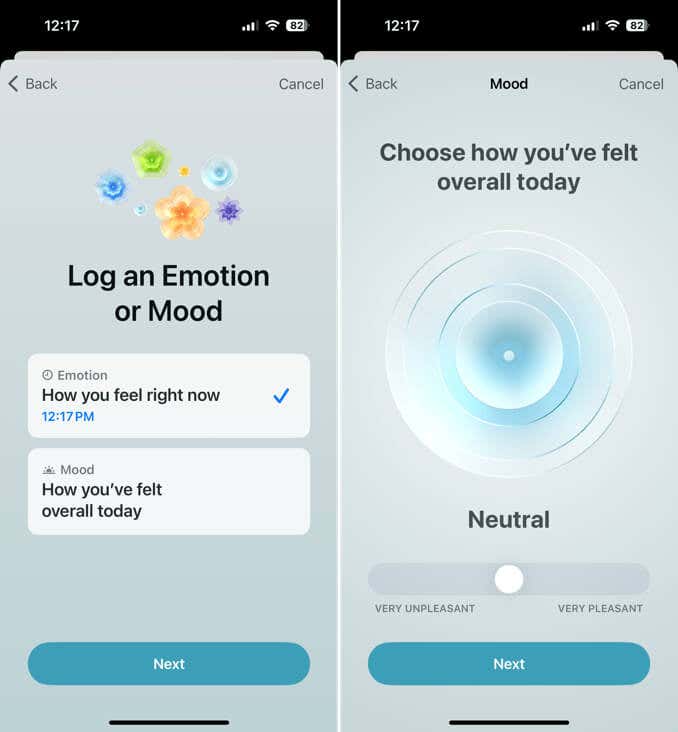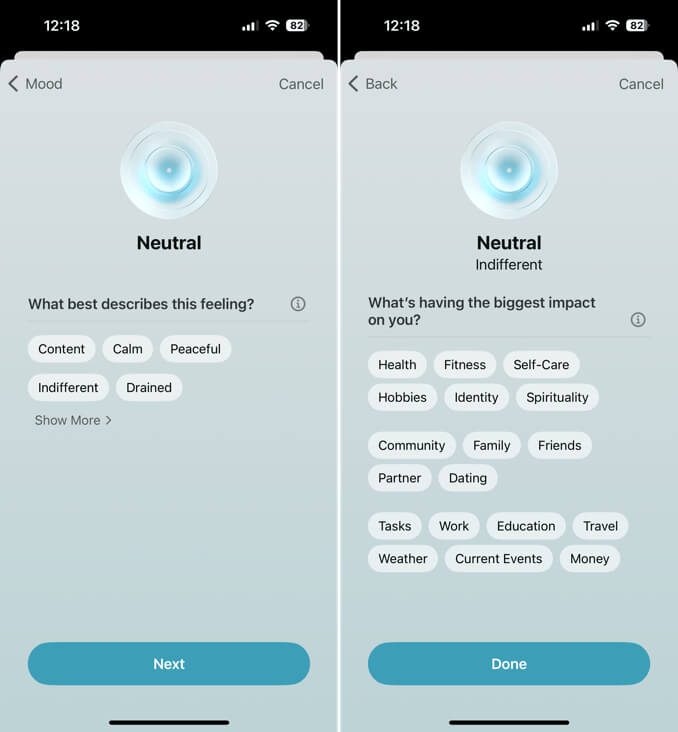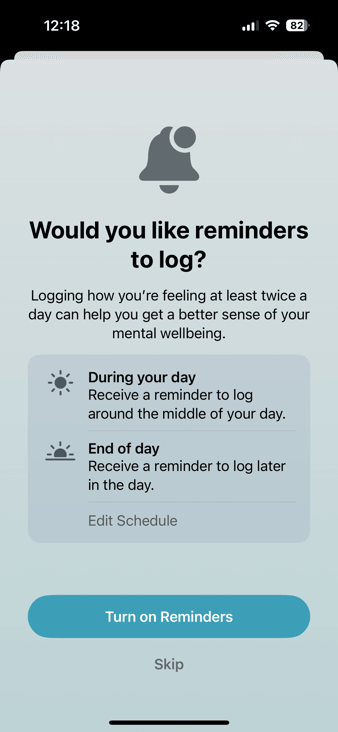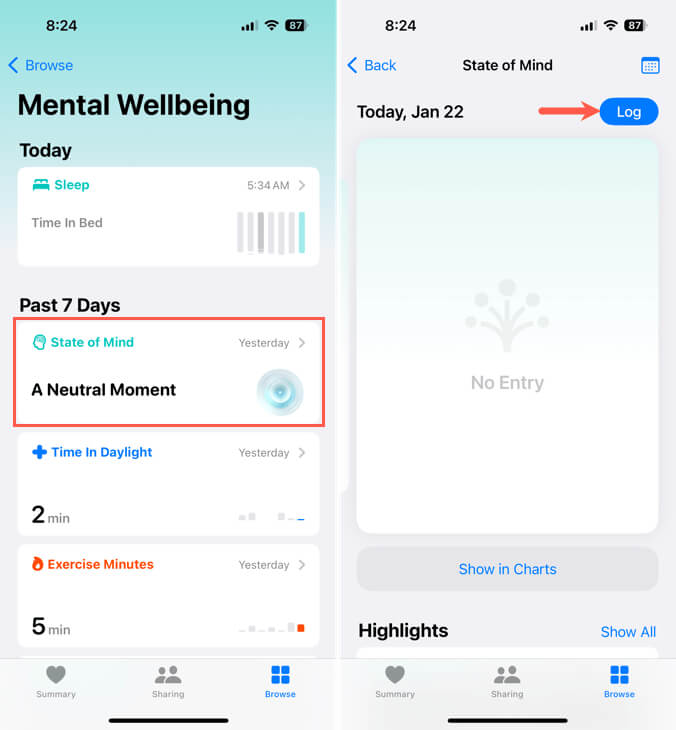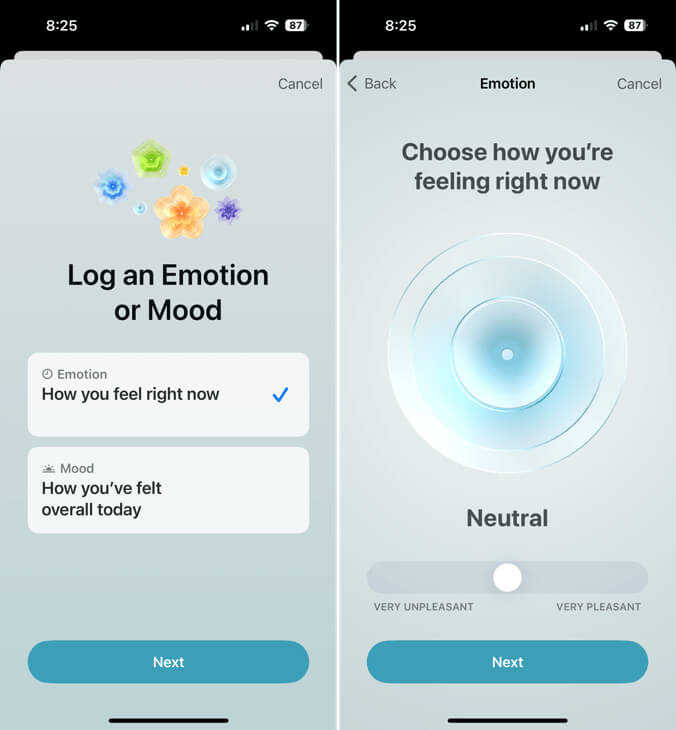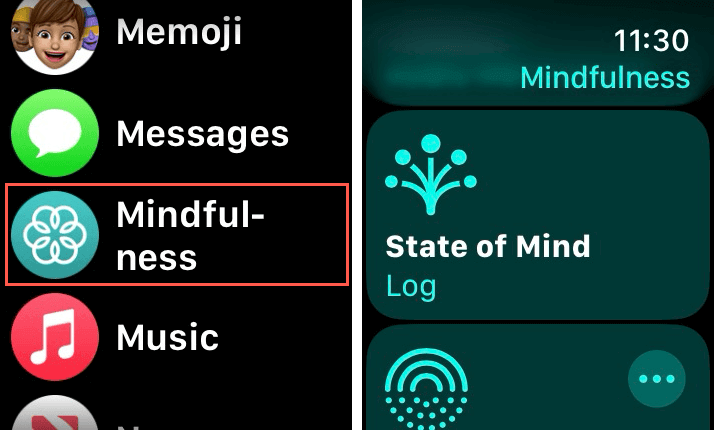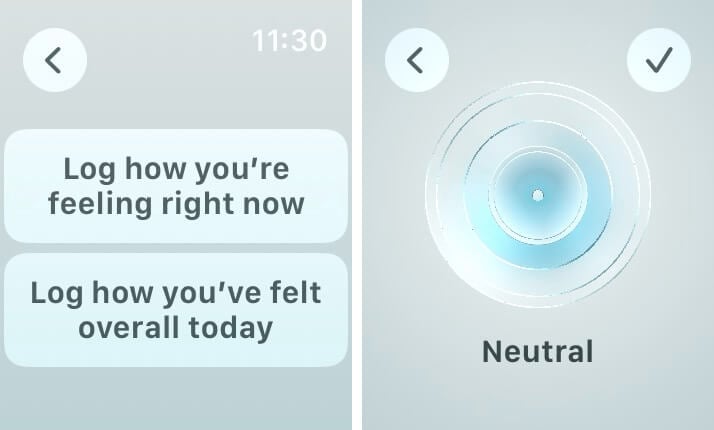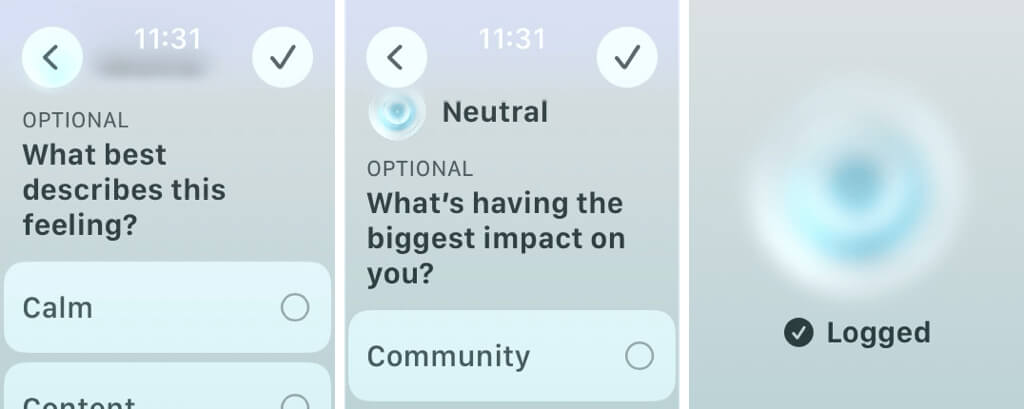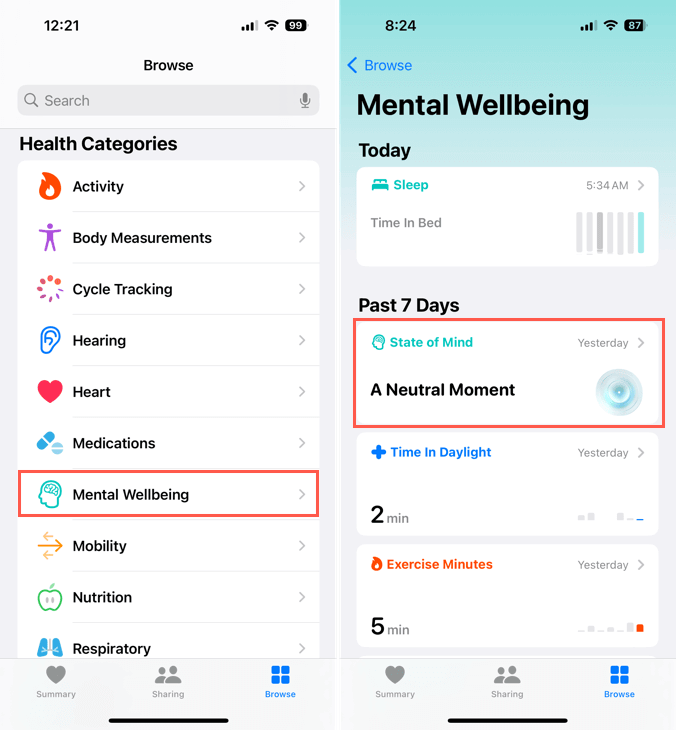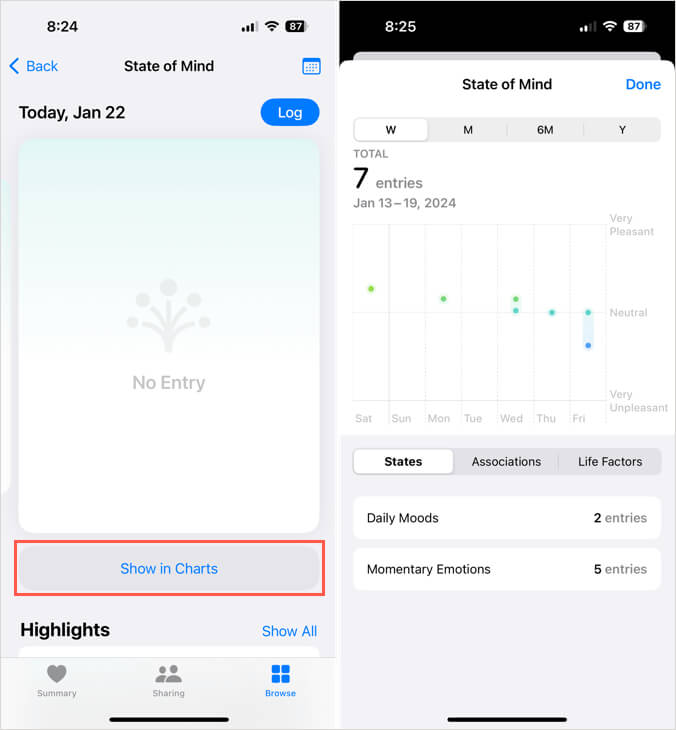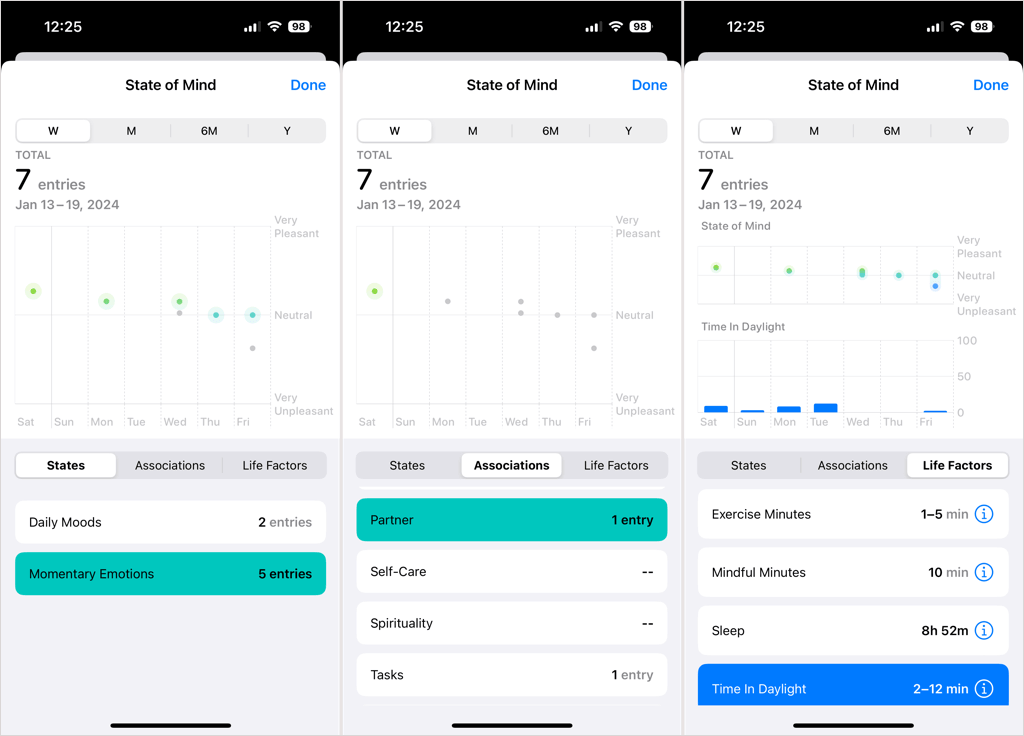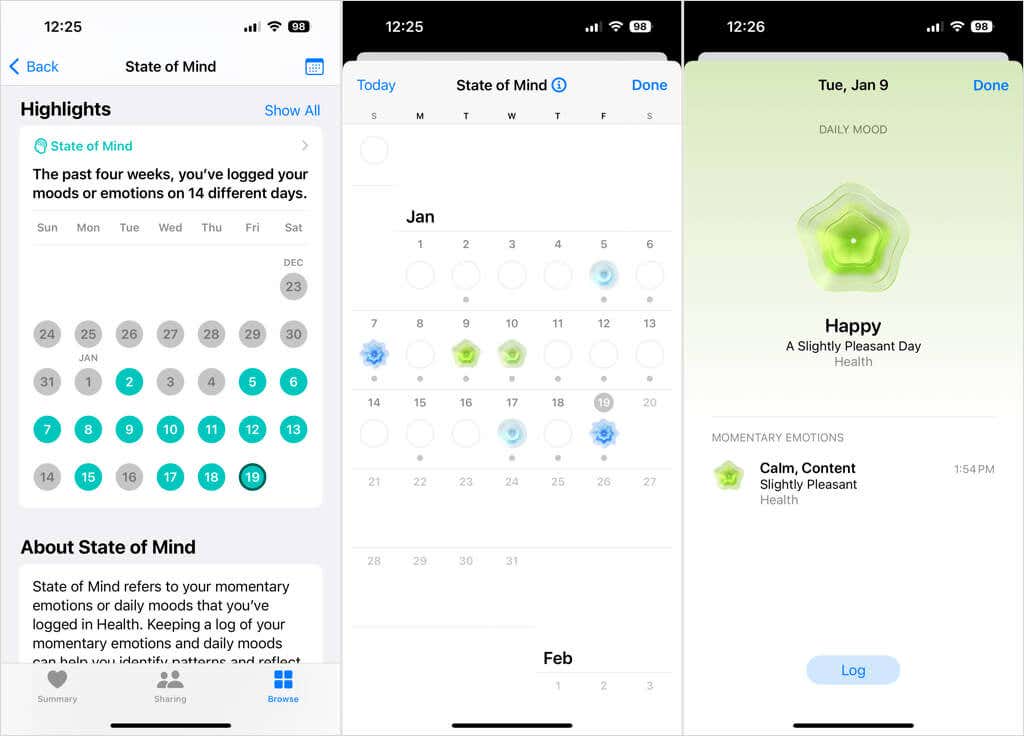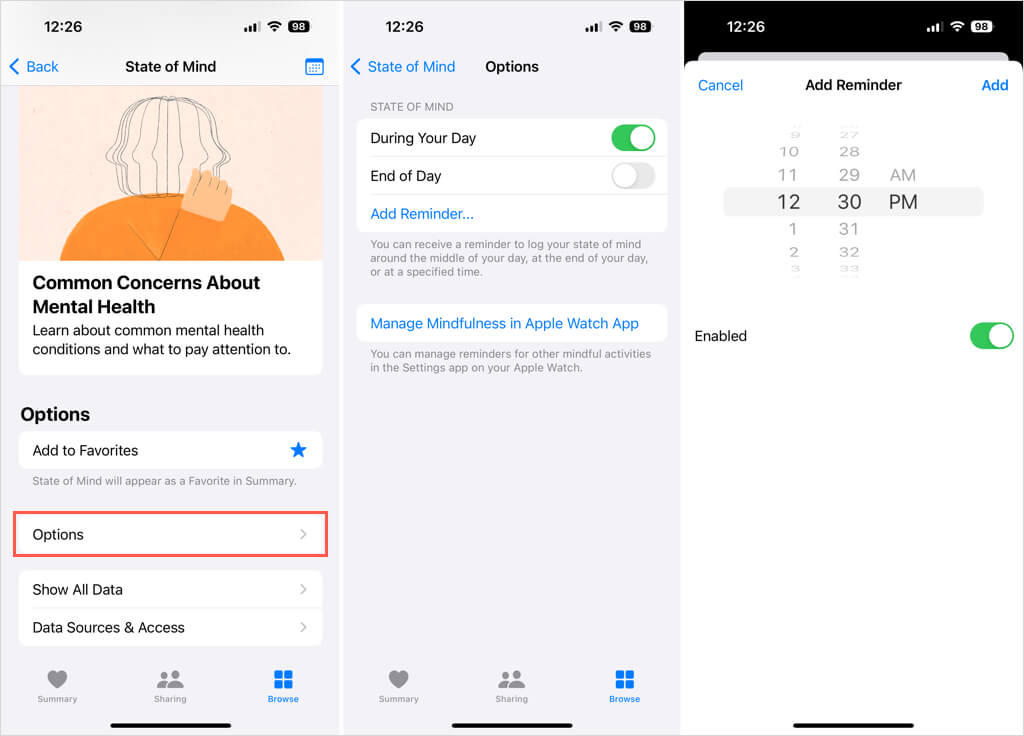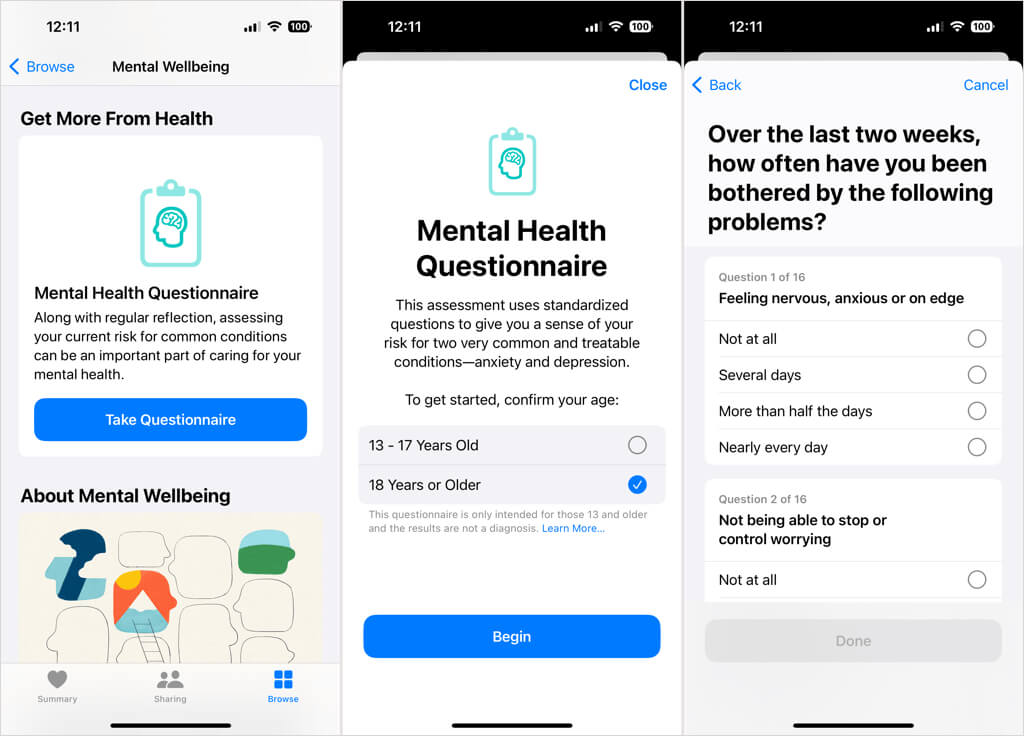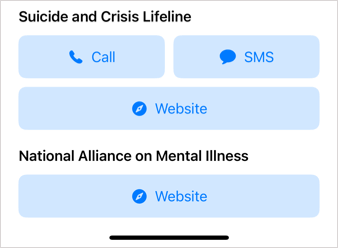A great way to maintain good mental health
There are many good Apple mental health apps. One such app is Apple Health. On iPhone, iPad, and Apple Watch, you can log your emotions or mood and include contributing factors like work, money, or family. You can then view your history, take a mental health assessment, and use this information to improve your overall mental well-being.
Note: To use Mental Wellbeing in Apple Health, make sure you’re running at least iOS 17, iPadOS 17, and watchOS 10.
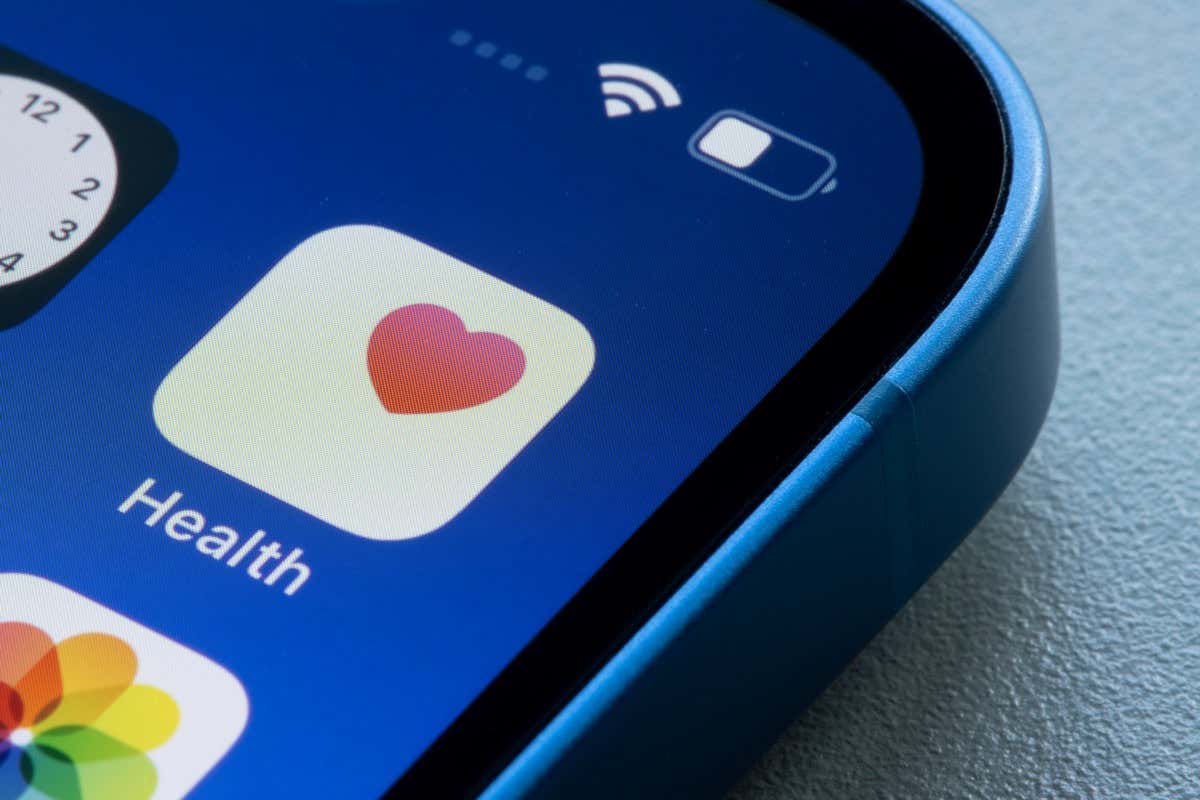
Get Started With Mental Wellbeing on iPhone and iPad
To get started, simply head to Apple Health and log your first emotion or feeling.
- Open the Health app on iPhone or iPad and go to the Browse tab.
- Select Mental Wellbeing.
- You’ll see a brief description of the feature. Tap Begin.
- When asked, choose whether you’d like to log an Emotion or Mood. Make your choice and tap Next.
- Use the slider to adjust your level of pleasantness and tap Next.
- Optionally pick additional feelings you’re experiencing such as calm, peaceful, or indifferent, and tap Next.
- Optionally add factors impacting your emotion or mood such as health, community, or work and tap Done.
- You’ll then be asked if you’d like to set reminders to log your mental well-being. You can make a selection and tap Turn on Reminders or pick Skip if you don’t want the notifications. We’ll also show you how to enable these reminders later.
You’ll then be returned to the Health app with your first emotion or mood successfully logged in your Mental Wellbeing history.
Log Your Mental Wellbeing on iPhone and iPad
After you log your first Mental Wellbeing entry, you can continue to record more throughout the day or as often as you like.
- Open the Health app, select the Browse tab, and pick Mental Wellbeing.
- Choose State of Mind and tap Log.
- Then follow the same steps 4 through 7 as above to log an emotion or mood, optionally including more feelings and contributing factors.
Log Your Mental Wellbeing on Apple Watch
If you wear an Apple Watch, this is ideal for logging your emotions or mood quickly and easily.
- Open the Mindfulness app and choose State of Mind.
- Choose whether you want to log an emotion or mood.
- Rotate the Digital Crown to pick the level of pleasantness and tap the checkmark.
- Optionally mark emotions to describe the feeling and what’s impacting you, tapping the checkmark as you complete each screen.
You’ll then see a brief “Logged” message and can find your history in the Health app on iPhone or iPad.
Review Your Mental Wellbeing History
To see patterns in your mood or what affects your emotions most, you can view your Mental Wellbeing history in the Health app. Additionally, you can use the interactive chart to drill down by day and entry.
Open Health, go to the Browse tab, and choose Mental Wellbeing. Select State of Mind to see the history options below.
View the Charts
You can see a helpful graph of your Mental Wellbeing history by week, month, six months, or one year, along with associated factors.
- Tap Show in Charts.
- Choose the timeframe at the top and you’ll see the chart update to display your pleasantness levels for that time.
- Below the chart, tap States, Associations, and Life Factors to review those contributing feelings and factors mentioned earlier along with other health aspects.
- States: See the number of entries for Daily Moods and Momentary Emotions. Tap an option to see the entries highlighted on the chart.
- Associations: View the number of entries that include factors like community, money, tasks, or work. Tap an option to highlight the corresponding entry on the chart.
- Life Factors: See additional factors that can play a part in your entries such as Exercise Minutes, Mindful Minutes, Sleep, and Time in Daylight. Tap an option to display its graph directly below the chart for an easy correlation.
- Tap Done when you finish.
See Highlights
You can see a quick view of how you logged your pleasantness each day or revisit a particular entry.
- Scroll down to Highlights or tap the calendar icon on the top right.
- You’ll then see the current month at a glance. Move up the screen to see previous months.
- Select a particular day to review your entry.
- Tap Done when you finish.
Enable Mental Wellbeing Reminders
If you skipped enabling the reminders when you first opened the Mental Wellbeing feature, you can turn on those notifications easily.
- Open Health, choose the Browse tab, and pick Mental Wellbeing.
- Select State of Mind, move down to the Options section, and tap Options.
- Turn on the toggles for During Your Day, End of Day, or both depending on when you want a reminder to log your Mental Wellbeing. If you prefer a custom schedule, tap Add Reminder and select the time of day.
Take a Mental Health Assessment
If you believe you’re suffering from anxiety or depression, you can take a questionnaire in Apple Health. This can help you take the next steps or make any changes you may need.
- Open Health, go to the Browse tab, and choose Mental Wellbeing.
- Move down to the Get More From Health section and tap Take Questionnaire below Mental Health Questionnaire.
- Confirm your age, tap Begin, and answer the questions.
- You’ll then receive results showing your risks for anxiety and depression. You can tap the Info icon (letter “i”) next to your results for more details.
- You can also move down the screen to see the next steps, export a PDF, contact the Suicide and Crisis Lifeline, or visit the National Alliance on Mental Health’s website.
- Tap Done when you finish.
You can revisit these results in the Mental Wellbeing section of the Health app anytime and take part in additional questionnaires.
Healthy Mind, Healthy Body
Knowing that mental health is just as important as physical health, you can keep track of your feelings and moods, and get further assistance if needed with Apple Health. Whether short-term stress or long-term anxiety, see what affects your emotions so that you can take steps to maintain good mental health.
Be sure also to take a look at the helpful articles and additional information you see in the Mental Wellbeing section of the Health app on your iPhone or iPad.

